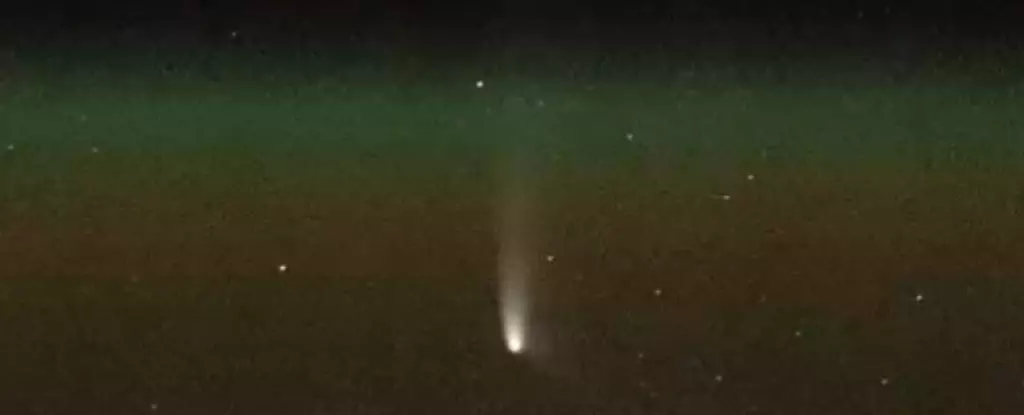In January 2023, the astronomical community welcomed a new visitor—a comet designated C/2023 A3, also known as Tsuchinshan-ATLAS. The discovery of comets is not an unusual occurrence; yet, this particular comet garnered attention for its potential brilliance. Some enthusiasts have even dubbed it the “comet of the century,” a label that highlights the excitement but also the unpredictability intrinsic to comet brightness. As many astronomers emphasize, forecasting how bright a comet will shine is notoriously tricky.
Now, as we find ourselves in the autumn of 2023, the comet’s arrival has indeed provided a spectacle worth noting. Currently visible to the naked eye in regions such as Australia and New Zealand, there has been a gradual build-up of interest and anticipation regarding its display. Although it may not ascend to the ranks of the decade’s best, its visibility certainly positions it to be the standout comet of the year.
The current positioning of comet C/2023 A3 has made it a notable sight in the morning sky, typically rising approximately an hour and a half before dawn. For the average observer, sighting the comet may not be an awe-inspiring experience just yet. However, those equipped with binoculars will be rewarded with a view of the comet’s dusty tail, stretching outward from its path as it navigates the solar system.
As we approach the end of September, the comet is expected to remain at a consistent altitude in the morning sky, but it’s crucial for residents in the southern hemisphere to focus their gaze towards the east. Upcoming dates around September 30 will mark a transitional phase as the comet progressively sinks closer to the horizon. This might pose a challenge for stargazers, as it will be enveloped by the increasing brightness of dawn by early October.
Fortunately, enthusiasts will have the opportunity to witness the comet’s closest approach to the Sun—an event called perihelion—on September 27, wherein it will come within 58 million kilometers of our central star. With this proximity, astronomers anticipate that the comet will brighten as it journeys closer to Earth, offering a captivating display for stargazers.
Adding to the spectacle, comet C/2023 A3 is slated to pass directly between our planet and the Sun on October 9 and 10. This event could spark a phenomenon known as forward scattering, where dust and gas expelled from the comet reflect sunlight back towards us. Picture observing a light source through a dusty veil—the resulting glow could be significant.
If the dust production is especially intense, there’s a chance the comet’s luminosity could increase dramatically, possibly becoming visible even during the day. However, spotting the comet will prove difficult due to its proximity to the Sun, and only seasoned astronomers may stand a chance to catch a glimpse. For the uninitiated, staring at the Sun—an unequivocally dangerous endeavor—is a definitive no-go.
After this brief interlude behind the Sun, we can expect a shift in visibility, as C/2023 A3 will transition to the evening sky, likely showcasing its brilliance starting from October 12. Those days may present an extraordinary cosmic spectacle, as the comet’s tail extends outward, perhaps appearing more pronounced in the night sky. Imagery flooded across social media is bound to captivate amateur astronomers and photography enthusiasts alike.
However, as we brace for what may be one of the year’s most compelling astronomical events, it’s essential to remain cautiously optimistic. Comets are notoriously unpredictable entities, often acting like capricious cats with their elusive tails. While the current trajectory of C/2023 A3 suggests a promising display, it is not uncommon for comets nearing the Sun to fragment unpredictably, potentially resulting in a spectacular display of dust and gas.
However, we must also remain grounded in reality. Should the comet fail to brighten as anticipated, the disappointment, while palpable, will not overshadow the thrill of observing such a fantastic celestial visitor. For the time being, the countdown continues, and stargazers around the world prepare to witness an exhilarating cosmic phenomenon that will capture the imagination, at least, for a fleeting moment.
The arrival of Comet C/2023 A3 is not just an event for avid astronomers; it serves as a reminder of the wonders of our universe and the unpredictability embedded within its intricate tapestry. Whether it stands the test of time as a memorable comet of the year or merely a whisper in the grand narrative of cosmic occurrences, the pursuit of understanding remains—and therein lies the beauty.

